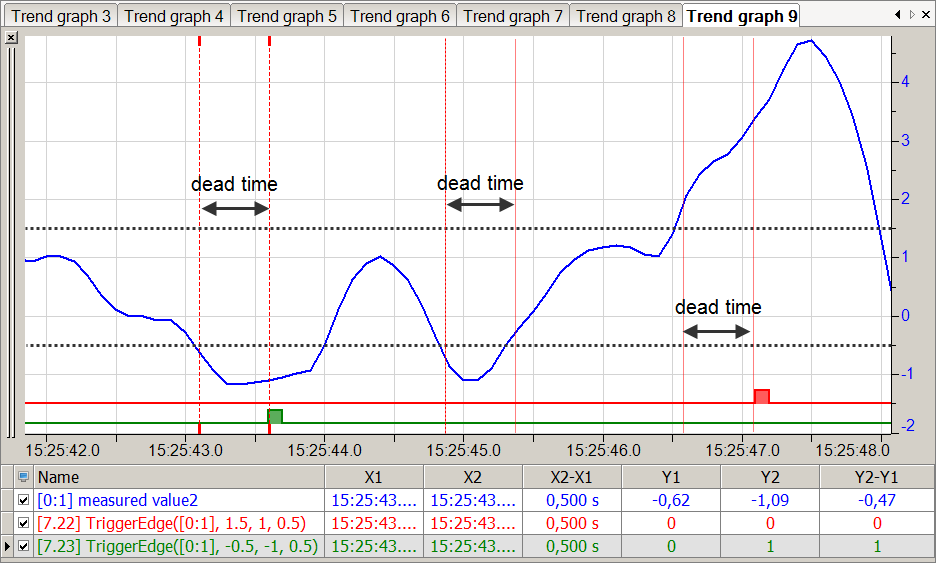TriggerEdge('Expression','Level*','EdgeType*','DeadTime*')
Arguments
|
'Expression' |
Measured value |
|
|
'Level*' |
Specification of the level value |
|
|
'EdgeType*' |
Specification of whether rising, falling or both edges, i.e. crossings of the level value are counted |
|
|
'EdgeType' < 0 |
only falling edges (crossing in the negative direction) |
|
|
'EdgeType' > 0 |
only rising edges (crossing in the positive direction) |
|
|
'EdgeType' = 0 |
falling and rising edges |
|
|
'DeadTime*' |
Time specified in seconds for which the measured value must exceed or fall below the level value in order to release the trigger. |
Parameters ending with * are only evaluated once at the start of the acquisition.
Description
Triggers if 'Expression' exceeds or falls below 'Level' and stays on the same 'Level' side for at least DeadTime' seconds. If 'Expression' is a digital signal, 'Level' is fixed at 0.5. 'EdgeType' determines which edges or crossing are counted:
Note |
|
|---|---|
|
Unlike the TriggerLevel and TriggerConstant functions, only a pulse is emitted when the level value is crossed. |
|
Example
A trigger should be released in each case where the measured value is above 1.5 or below -0.5 for 0.5 seconds.
Solution
In the figure below the blue curve shows the measured value and the red bar shows the trigger if measured value is longer than 0.5 seconds above 1.5. The green bar shows the trigger if measured value is longer than 0.5 seconds below -0.5.
